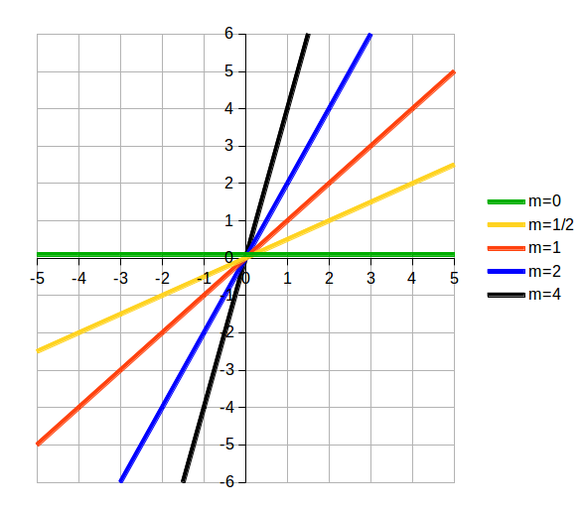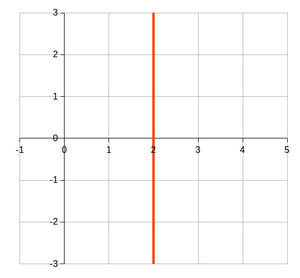Lines with different slopes
The most intuitive way to describe a line is by its slope which tells us how steep the line is, whether it is slanted to the right or to the left, or whether the line is a horizontal or a vertical line. A line with a positive slope slants to the right, and the larger the slope, the steeper the line. A line with a negative slope slants to the left and, the larger the slope, the greater the steepness of the line. A horizontal line has no slant and therefore, has a slope of 0. The slope of a vertical line is undefined. (The reason why will be obvious in the next section.)
Lines with positive slopes
In Graph A at right:
- Note that in the legend on the right, the variable m is used to indicate a line's slope.
- The green line has a slope of 0; it is horizontal and has no steepness.
- The yellow line, which has a little steepness, has a slope of 1/2.
- The red line, which has some steepness, has a slope of 1.
- The blue line, which is steeper than the line with a slope of 1, has a slope of 2.
- The black line, the steepest of all, has a slope of 4.
A line with a slope of 10 would be steeper than all of the other lines shown, and a line with a slope of 1/4 would have a slant somewhere between the yellow line with slope of 1/2 and the green line with slope of 0.
Lines with negative slopes
In Graph B, the green line is horizontal and has a slope of 0. (Although the green line is now positioned at y=3, its slope is still 0 because it is horizontal.)The other lines now have negative slopes and slant downwards from left to right. Each slope is the negative for the same-color line in Graph A.
The values for the slope (m) of each line are shown in the legend on the right.


